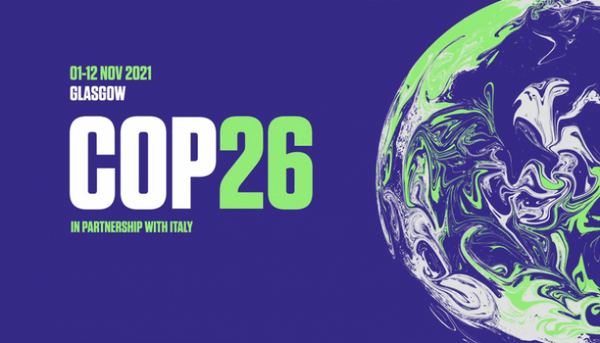The COP26 climate summit just has begun on Sunday, with world leaders from more than 100 countries. It set to take part in what is regarded as humanity’s last and best chance to secure a livable future amid dramatic climate change.
COP26: Conference of the Parties
The climate summit in Glasgow is called COP26, which stands forthe 26th “Conference of the Parties.” It represents a gathering of all the countries signed on to the UN Framework Convention on Climate Change and the Paris Climate Agreement.
Last year’s in-person meeting was delayed due to theCOVID-19 pandemicso COP26 will be the first time countries have met since the UN’s latest climate science reportissued a dire warningthat the impacts of climate change are getting more severe and that time is running out to meet the Paris Agreement goal of limiting warming to 1.5 degrees Celsius.
Why does it take place in Glasgow?
The presidency tends to swing between developed and developing countries, and around the world so that all regions are represented. In previous the Cops have taken place in Copenhagen, Kyoto, Marrakesh, Lima and Durban, and next year’s is likely to be in Egypt. The UK is actually co-hosting Cop26 with Italy, which has hosted several precursor meetings. It also is including a pre-Cop and a youth Cop in Milan and will host the G20 leaders’ meeting just days before Cop26.
Who goesto COP26?
5 regional groups: African States, Asian States, Eastern European States, Latin American and Caribbean States, and the Western European and Other States.
Much smaller groups: National delegations have self-organized into smaller blocs, most notably – Arab States, the Least Developed Countries, the Organisation of Petroleum Exporting Countries (OPEC) group, the G77 group of developing countries, AILAC (Independent Alliance of Latin America and the Caribbean), the EU27 (European Union member states), and the BASIC (Brazil, South Africa, China, India).
There are also a host of influential non-state observer groups, including:
ENGOs:Environmental NGOs
RINGOs:Research and independent NGOs
LGMAs:Local governments and municipal authorities
TUNGOs:Trade unions
YOUNGOs:Youth organizations
BINGOs:Business and industry
What’s on the agenda?
Negotiators for this year’s climate summit will face questions about how to limit the impact of climate change by reducing greenhouse gas emissions. There will also include helping countries adapt to climate change in parts of the world where the effects are getting more severe.
The most critical item on the agenda is increasing nearly every country’s commitments to decreasing climate-warming emissions as early as possible. Even with current promises to reduce emissions in line with the Paris Agreement, the UN says the world is set to miss that goal to limit warming to 1.5 degrees Celsius.
Why Cop, when there is a Paris agreement?
Under thelandmark Paris agreement, signed in 2015, nations committed to holding global temperature rises to “well below” 2C above pre-industrial levels, while “pursuing efforts” to limit heating to 1.5C. Those goals are legally binding and enshrined in the treaty.
However, to meet those goals, countries also agreed on non-binding national targets to cut – or in the case of developing countries, to curb the growth of – greenhouse gas emissions in the near term, by 2030 in most cases.
Those national targets – known asnationally determined contributions, or NDCs – were inadequate to hold the world within the Paris temperature targets. If fulfilled,they would result in 3C or more of warming, which would be disastrous.
Everyone knew at Paris that the NDCs were inadequate, so the French-built into the accord a “ratchet mechanism” by which countries would have to return to the table every five years with fresh commitments. Those five years were up on 31 December 2020, but the pandemic prevented many countries from coming forward.
All countries are now being urged to revise their NDCs before Cop26 in line with a 1.5C target, the lower of the two Paris goals. Scientists estimate that emissions must be reduced by 45% by 2030, compared with 2010 levels, and from there to net zero emissions by 2050 if the world is to have a good chance of remaining within the 1.5C threshold.
China’s participation
China will aim for emissions to peak by 2030, and reach net-zero emissions by 2060, and reduce the amount of carbon it produces per unit of GDP by 65%. Experts believe China is capable of doing far more peaking emissions by 2025, which would be a major boost to global efforts to remain within 1.5C.
Why is 1.5C so important?
As part of the Paris agreement, the world’s leading authority on climate science – the Intergovernmental Panel on Climate Change – was charged with examining closely what a 1.5C temperature rise would mean for the planet. They found a vast difference between the damage done by 1.5C and 2C of heating andconcluded that the lower temperature was much safer.
What is net-zero?
To stay within 1.5C, we must stop emitting carbon dioxide and other greenhouse gases from burning fossil fuels, from agriculture and animal husbandry which create methane from cutting down trees and from certain industrial processes almost completely by mid-century. Any residual emissions remaining by then, for instance from processes that cannot be modified, must be offset by increasing the world’s carbon sinks, such as forests, peatlands, and wetlands, which act as vast carbon stores. That balance is known as net-zero.
Other problems
At Cop26, countries will also have to find an answer to the conundrum ofcarbon trading. Carbon trading was first introduced to the talks in the Kyoto protocol of 1997, as a mechanism by which rich countries could hive off some of their carbon reduction to developing countries. It works like this: a ton of carbon dioxide has the same impact on the atmosphere wherever it is emitted, so if it is cheaper to cut a ton of carbon dioxide in India than in Italy, the Italian government or companies could pay for projects solar panels, for example, or a wind farm in India that would reduce emissions there, and count those “carbon credits” towards their own emissions-cutting targets.
In this way, poor countries gain access to much-needed finance for emissions-cutting efforts, and rich countries face less of an economic burden in cutting carbon.
What happens if Cop26 fails?
The big players in the talks the UN, the UK, and the US have already conceded thatCop26 will not achieve everything that was hoped for. The NDCs likely to emerge from Glasgow will not add up to all that is needed to ensure the world remains within 1.5C.
The UK hosts are now focused on is ensuring that there is enough progress on emissions cuts for 2030 to “keep 1.5C alive”, and to pursue as many other routes phasing out coal; cutting methane; setting a path away from fossil fuels for transport; getting business, financial institutions and sub-national governments to set out plans to cut emissions in line with 1.5C that will help reach that goal as soon as possible.
One of the key issues now is to ensure that the talks themselves run smoothly. The Copenhagen Cop in 2009 was widely perceived as a failure, even though it produced a partial agreement that became the foundation for Paris. But it ended in scenes of chaos, division, recriminations, and discord. If that can be avoided, and a clear route map drawn up that can credibly keep the world from exceeding 1.5C, Cop26 may still have a successful outcome.
History of COP
1992: The UN Conference on the Environment and Development (UNCED aka Earth Summit) convening 30,000 representatives of 178 governments, NGOs, media, and others interested in Rio de Janeiro, Brazil.
3:Documents that came out of the 1992 Earth Summit – the UN Framework Convention on Climate Change (UNFCCC), the UN Convention on Biological Diversity (UNCBD), and the UN Convention to Combat Desertification (UNCCD).
COP: Conference of Parties – the Governments that signed these legal conventions became “Parties” and started meeting regularly at each “COP” – on climate, biodiversity, and on desertification. The COP is the supreme decision-making body for each of the Conventions.
UNFCCC: The UN Framework Convention on Climate Change (UNFCCC), and its Conference of Parties for signatory governments, is the best known of the COPs, with 197 signatories.
COP1:The first-ever Climate COP, held in Berlin, in 1995 and annually ever since, now attracting 40,000+ participants from all over the world.
2019:Under formal US President Donald Trump, the United States quits the Paris Agreement.
2021:On his first day in office, President Jo Biden re-joinsthe Paris Agreement and shortly after releasesthe USA’s first NDC, setting anemissions reduction targetof at least 50% by 2030 compared to 2005 (though this is still higher than the EU’s per capita emissions in 2021).













